Above Japanese Film Maker Akira Kurosawa.
CULTURE:
The definition of the word varies, but basically "Culture" is described as:
a way of life of a group of people--the behaviors, beliefs, values, and symbols that they accept, generally without thinking about them, and that are passed along by communication and imitation from one generation to the next.When you read a novel such as John Steinbeck's 1939 "The Grapes of Wrath", The visualization of the period being discussed "The Great Depression" comes from your own mind and is influenced by both the author's words and your own experiences. However when it comes to viewing a live stage, or film version of that same work. We as an audience accept the interpretation of the culture being given to us by the director and producer as fact such as in John Ford's award winning1940 motion picture of Steinbeck's novel.
Question:
What if "The Grapes of Wrath" was made for either stage, or film by a country other than the United States, Would they be able to understand and show an accurate portrayal of American life during "The Great Depression"? What would that stage, or film production look like as their culture interacted with our own?
In 1931 Fritz Lang and his wife of the time Thea von Harbow wrote a chilling tale of a child murderer that became the classic motion picture starring Peter Lorre "M". The film follows the unfeeling killer from crime to crime as the police of an unnamed German city attempt to track him down. A problem develops as a result of this stepped up police activity for the German underworld and they decided to find the murderer themselves. The film is a perfect example of German Expressionism of the period,
In 1951 probably unknown to the fast majority of my readers there was an American remake of "M". The original producer of the German classic Seymour Nebenzal and his son Harold were behind the film. Seymour wanted to make an exact copy of the original scene by scene. The new setting was Los Angles.
David Wayne played the child killer in the remake, Seymour Nebenzal was almost able to make his scene by scene recreation of the original. However, certain changes had to be made, because the Los Angeles Police Department didn't operate like the German of the original and American criminals operated differently than their German counterparts. Plus some additional scenes were needed to make the original Lang/von Harbow script translate to 1951 United States .
As an aside the 1951 "M" was considered a lost film, but a copy was found and restored. In January 2016 Turner Classic Movies ran it for the first time since 1951. When it was pulled from release as result of the American public's reaction to the subject matter. The film is as chilling as the 1931 original and for me recognizing the places used from my childhood very upsetting.
Peter Lorre as "M" 1931
David Wayne as "M" 1951
This article illustrates some examples of a person from one "culture' interpreting another's into their own. Sometimes this works and sometimes it doesn't. I start with the "doesn't" even if that may not have been the actual result.
JOHN HUSTON'S SAMURAI MOTION PICTURE
Townsend Harris:
Harris was a member of the New York City Board of Education from 1846 to 1848. He established the "Free Academy of the City" which would become the "City College of New York". While self teaching himself French, Italian and Spanish. In 1848 Harris went to California and from there made trading voyages to China and the Dutch and British Indies. In 1856 President Franklin Pierce named Townsend Harris as the first United States Consul General to the Empire of Japan, He would open the first consulate located at the Gyokusen-ji Temple in the city of Shimoda, in Shizuoka Prefecture. According to legend one of his household was a 17 year old geisha named Okichi whose real name was Kichi Saitou and after Harris left Japan she became an outcast, because of what was believed happened between her and the gaijin. This was the basis for the first film I want to speak about.
Here is a link from the Japanese National Tourism Organization about the temple and Townsend Harris.
http://www.jnto.go.jp/eng/location/spot/shritemp/gyokusenji.html
Initially director Anthony Mann had the rights to Harris' story, Mann is probably best known for directing eight motion pictures with James Stewart which included "Winchester 73", the "Glenn Miller Story" and "Strategic Air Command". Along with the two epics "El Cid" and the 1964 "The Fall of the Roman Empire" that director Ridley Scott remade as 1992's "Gladiator".
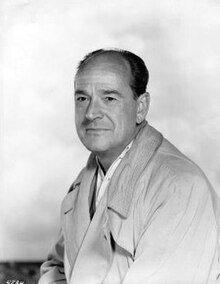
However, Mann had an unusual problem. He could not find a major star who wanted to play Townsend Harris and he eventually sold his rights to the story to 20th Century Fox studios.
Enter John Huston.

John Huston loved the films of Akira Kurosawa, Hiroshi Inagaki (The Samurai Trilogy), Teinosuke Kinugasa (Gate of Hell), Kenji Mizoguchi (Sansho the Baliff) and other Japanese directors, These specific motion pictures were set in feudal Japan an era Huston the history buff liked. He strongly believed that an American could make a motion picture set in feudal Japan in the style of these directors. A film that would be the equal to these great Japanese directors. Of course in his mind he was the only one who could accomplish creating such a picture completely shot in the Japanese style, pacing and narrative quality of those masters. Call it ego, or whatever.
After Anthony Mann left the project Huston became aware of the Townsend Harris story which was set during the final years of the Tokugawa shogunate, He then convinced 20th Century Fox to back the motion picture and let him direct. The studio was receptive to having another film under his name after the success of the Robert Mitchum, Deborah Kerr "Heaven Knows Mr. Allison", but John Huston faced the same problem as Mann. The studio would not give the final go ahead for the production unless a major American star was cast as Harris. The studio felt that hardly anyone ever went to a Japanese Foreign Language motion picture and American's were unfamiliar with their actors who would play the majority of the other roles.
Enter John Wayne,
Wayne was still looking for some role he could portray that would convince audiences that there was more to him than playing a cowboy. See my article at the following link about "John Wayne's Four Gutsy Role Choices" for more details:
http://kinescopedreams.blogspot.com/2015/04/john-wayne-four-gutsy-role-choices-with.html
John Wayne not only brought a name, but the potential for a larger budget. The production company left for Japan to begin shooting the exterior shots in Kyoto and at the Todai-ji Shrine in Nara which substituted for the Gyokusen-ji Temple,

Other shots were filmed at the Toho Studios in Japan and at 20th Century Fox in Los Angeles. The production did not go well as both John's didn't get along and Wayne actually punched Huston on the set in front of the company. However, the film shooting was finally completed and the initial editing would be performed by John Huston himself.
In Los Angeles he began the process of bringing his vision to the screen. It was never to happen.
When 20th Century Fox was presented with Huston's director's cut they ordered him to make the film substantially shorter. His vision required an intermission and that meant less showings in a day and less profits. The studio would not release the film John Huston wanted. Even though the same year the studio released the Rodgers and Hammerstein musical "South Pacific" with an intermission at 171 minutes, but of course "South Pacific" was a known quantity to the studios "bean counters".
Huston refused to re-edit the film and even demanded his name be removed from the credits. The studio reminded him he had a contract and his name would remain on their release. The executives at 20th Century Fox next had a studio editor do the re-editing with the caveat of concentrating on the love story over the history. The result was the feature I first saw upon its release September 30, 1958 at a running time of 105 minutes.
After the 20th Century Fox re-edit was released John Huston started a lawsuit that resulted in the film being banned for decades in the United States, but not other countries. In 2012 the motion picture as released by the studio finally became available and is now on both DVD and Blu-ray. My DVD copy from several years before came from Brazil.
Did John Huston succeed in making a Japanese motion picture reflecting their culture during the Tokugawa shogunate by an American director? We will never know for sure as searches of the studio's vaults turned up not one piece of the missing footage, or his original cut.
What we do know is derived from John Huston's own shooting script with his handwritten editing instructions upon it. The script does indicate a motion picture estimated to be twice the length of the released cut and certainly different with the "love story" as secondary and not primary.
One of the problems 20th Century Fox faced with it's own re-edit was the loss of continuity. Dialogue in one scene might refer to an incident that is never shown, but it is obvious was shot. The audience is watching one scene and then the very next is six months later without explanation. Actress Eiko Ando who played Okichi had extensive narration written for her to help fill in these gaps, but anyone watching the feature knew something was missing on the screen. These gaps also led to most reviewers criticizing John Wayne's performance as Townsend Harris, because unknown at the time it was not complete.
The two posters below also accent the love story.
Actually the year prior to the release of "The Barbarian and the Geisha" a motion picture was released by a director who proved John Huston's premise somewhat in reverse. The film was from Japan the country Huston had traveled too, but was based upon a play by Elizabethan William Shakespeare that transferred one of his English plays set in the countryside of Scotland to feudal Japan. The director of this motion picture was one of John Huston's favorites Akira Kurosawa and the original work was "Macbeth". This is that story:
WILLIAM SHAKESPEARE'S 'MACBETH"
Sometime in April of 1611 the first recorded performance of William Shakespeare's play "Macbeth" took place. The play was set in 11th Century Scotland and begins with this classic scene:
ACT I
SCENE I. A desert place.
Thunder and lightning. Enter three Witches
First Witch
When shall we three meet again
In thunder, lightning, or in rain?
Second Witch
When the hurlyburly's done,
When the battle's lost and won.
Third Witch
That will be ere the set of sun.
First Witch
Where the place?
Second Witch
Upon the heath.
Third Witch
There to meet with Macbeth.
First Witch
I come, Graymalkin!
Second Witch
Paddock calls.
Third Witch
Anon.
ALL
Fair is foul, and foul is fair:
Hover through the fog and filthy air.
Exeunt
According to Shakespeare Generals Macbeth and Banquo meet three witches in a forest called Birnam Wood. The three witches make a prophecy that Macbeth will become King of Scotland and that Banquo will beget a line of Scottish Kings, but he will never be one himself.
Macbeth sends word to his wife of the prophecy and when he returns to her. She pushes him to kill the current King Duncan and assume the Kingship of Scotland. Macbeth stabs Duncan in his sleep and becomes King. Fearful of the witches prophecy about Banquo Macbeth hires a group of murders to kill him and his son.
Macbeth visits the witches once more and is informed that he must fear Macduff a Scottish noblemen who opposed him becoming King. The witches also tell Macbeth two important plot points. One he will remain King until Birnam Wood comes to him at Duinsane Castle. As a wood can't move itself this does not bother him. The second point is that his life is safe from all men born of women. Knowing that all men are born of women Macbeth feels secure. He then orders Macduff's castle seized and his wife and children killed.
Macbeth's wife becomes a sleepwalker and has dreams of the blood on their hands. Eventually she kills herself. Macduff joins Prince Malcolm, another son of King Duncan who was in England, and the two advance on Duinsane Castle. Here the witches prophecies come true as Malcolm and Macduff's troops use cut branches from Birnam Wood to help conceal their advance. The second part also comes true at the plays climax Macbeth is killed by Macduff. Who was born by cesarean section and is therefore not women born.
THE HISTORICAL MACBETH?
A good question with an answer of Yes!
He was "Mac Bethad mac Findlaich" which was anglicized into 'Macbeth" known as "the Red King". Macbeth was "King of Scotland" aka: "King of Moray", "King of Alba" and "King of Fortriu" from 1040 to 1057 when he was killed.
As for the characters of Duncan and Malcolm. The real Duncan the First was King of Scotland until his death in battle during 1040 when Macbeth became King by succession. Macbeth was the grandson of King Malcolm the Second and therefore a Cousin to Duncan the First. The wife of Duncan the First fled Scotland for England after Macbeth was named king, She took with her their children the future King's Malcolm the Third, the real basis for Macduff, and Donald the Third.
In 1052 Macbeth became the first Scottish King to introduce feudalism to the country. In 1054 an English invasion force was led by Edward Earl of Northumbria, Siward. It has not been proven, but it is believed that Edward was related to Duncan the First's widow and from that a relation of Malcolm the Third who accompanied the invasion force. Three years later in 1057, Macbeth is killed by Malcolm in a battle at the village of Lumphanan,
AKIRA KUROSAWA ADAPTATION OF SHAKESPEARE'S "MACBETH"
The first question we need to address is why would Akira Kurosawa choose "Macbeth" over some of the other works of William Shakespeare?
When you look at Scotland at the time of the real "Macbeth" it compares very well with the feudal Japan of Akira Kurosawa's motion picture. Both countries were feudal in nature and the peasants became the warriors of the Kings and Generals. Although the Scottish peasantry might not have felt the high honor of the Japanese Samurai. Both were fierce and loyal fighters to their lords.
Below, the 10th Century Scottish Warrior

Below, the 10th Century Samurai

Even the real Macbeth's story is connected by a "Prophecy" outlined in a 12th century poem "The Prophecy of Berchan". This 205 stanza poem was written in the Middle Irish language and was alleged to be based upon a prophecy made in the Middle Ages, or even older.
Below, are two of the original motion picture posters

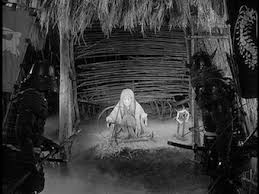
At night, the sound of wood being cut is heard. In the morning, "Lord Washizu" is awakened by the screams of his attendants, and he finds his wife in a catatonic state washing her hands clean of the blood she sees on them over and over again.
The first question we need to address is why would Akira Kurosawa choose "Macbeth" over some of the other works of William Shakespeare?
When you look at Scotland at the time of the real "Macbeth" it compares very well with the feudal Japan of Akira Kurosawa's motion picture. Both countries were feudal in nature and the peasants became the warriors of the Kings and Generals. Although the Scottish peasantry might not have felt the high honor of the Japanese Samurai. Both were fierce and loyal fighters to their lords.
Below, the 10th Century Scottish Warrior

Below, the 10th Century Samurai

Even the real Macbeth's story is connected by a "Prophecy" outlined in a 12th century poem "The Prophecy of Berchan". This 205 stanza poem was written in the Middle Irish language and was alleged to be based upon a prophecy made in the Middle Ages, or even older.
Below, are two of the original motion picture posters

The actual Japanese motion picture title is not "Throne of Blood" as it is known in the United States and many other countries, but "Kumpnosu-jo (Spider Web Castle)", Which obviously refers to Duinsane Castle in the play In his film Akira Kurosawa transfers the basic plot of William Shakespeare's play into a typical Japanese Noh drama. For those unfamiliar with the term Noh, or Nogaku. It is usually defined as:
classic drama of Japan, developed chiefly in the 14th century, employing verse, prose, choral song, and dance in highly conventionalized formal and thematic patterns derived from religious sources and folk myths.The main plot of "Spider Web Castle" opens with "General Taketori Washizu (Macbeth)", portrayed by Toshiro Mifune, and "General Yoshiaki Miki (Banquo)", portrayed by Minoru Chiaki, on the way back to the castle of "Lord Kuniharu Tsuzuki (King Duncan)", portrayed by Hiroshi Tachikawa, billed as Yoichi Tachikawa. The two men are traveling in a deep fog much like the one's found in many areas of Scotland.
The two men meet a Female Spirit (The Three Witches of Shakespeare in one character) within Spider Web Forest. The "Spirit" foretells their future, "Washizu" will become the Lord of the Northern Garrison, and "Miki", the Commander of the First Fortress. The "Spirit" also tells the two, that eventually, "Washizu" will become the "Lord of Spider Web Castle" and "Miki's" son, portrayed by Akira Kubo, will one day rule there too.
When the two General's return to the Castle, "Lord Tsuzuki", does exactly what the Forest Spirit stated would happen and "Washizu" finds himself made Lord of the North Garrison. He next goes to his wife, "Lady Asaji Washizu (Lady Macbeth)", portrayed by Isuzu Yamada, and tells her all that has happened that day.
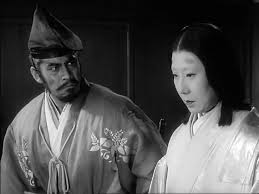
"Lady Asaji", convinces her husband to murder "Tsuzuki". Together they place a drug in sake and give it to "Lord Tsuzuki's" guards to make them sleep. After the guards are soundly asleep "Taketori" and "Lady Asaji" go into "Tsuzuki's" sleeping chamber where he is killed with a spear. The spear is placed in one of the guards hands and when he awakens, before he can say anything "Taketori Washizu" murders him also.
"Lord Tsuzuki's" vengeful son "Kunimaru (may be considered either Malcolm, or Donalbain)", portrayed by Takamaru Sasaki, and an advisor to "Tsuzuki" named "Noryiasu Odagura (Macduff)", portrayed by Takashi Shimura, below, suspect that "Washizu' has killed "Kunimaru's" father.
"Lady Asaji", convinces her husband to murder "Tsuzuki". Together they place a drug in sake and give it to "Lord Tsuzuki's" guards to make them sleep. After the guards are soundly asleep "Taketori" and "Lady Asaji" go into "Tsuzuki's" sleeping chamber where he is killed with a spear. The spear is placed in one of the guards hands and when he awakens, before he can say anything "Taketori Washizu" murders him also.
"Lord Tsuzuki's" vengeful son "Kunimaru (may be considered either Malcolm, or Donalbain)", portrayed by Takamaru Sasaki, and an advisor to "Tsuzuki" named "Noryiasu Odagura (Macduff)", portrayed by Takashi Shimura, below, suspect that "Washizu' has killed "Kunimaru's" father.
"Kunimaru" and "Noryiasu}, go to "Miki", and tell him their beliefs. "Miki" will not believe that about his friend.
THE MAIN CHANGES IN THE FILM FROM WILLIAM SHAKESPEARE'S PLAY
"Washizu" is unsure of "Miki", but wants to trust his friend. He also wants to make "Miki's" son his heir as he and "Asaji" cannot have children. However, at this point in "Kurosawa's" version of "Macbeth". "Asaji" reveals that she is pregnant and "Washizu" decides he must kill both "Miki" and his son to protect his own unborn heir.
At a grand banquet, after drinking too much, the "Ghost of Miki" suddenly appears and "Taketori" in his confusion over this, pulls out his sword, and attempts to murder the ghost. By his action and remarks, he has revealed himself to those present. "Lady Asaji" attempts to explain her husband's action as drunkenness and nothing more, but one of his samurai appears with "Miki's" severed head and explains that "Miki's" son has escaped the ambush.
THE MAIN CHANGES IN THE FILM FROM WILLIAM SHAKESPEARE'S PLAY
"Washizu" is unsure of "Miki", but wants to trust his friend. He also wants to make "Miki's" son his heir as he and "Asaji" cannot have children. However, at this point in "Kurosawa's" version of "Macbeth". "Asaji" reveals that she is pregnant and "Washizu" decides he must kill both "Miki" and his son to protect his own unborn heir.
At a grand banquet, after drinking too much, the "Ghost of Miki" suddenly appears and "Taketori" in his confusion over this, pulls out his sword, and attempts to murder the ghost. By his action and remarks, he has revealed himself to those present. "Lady Asaji" attempts to explain her husband's action as drunkenness and nothing more, but one of his samurai appears with "Miki's" severed head and explains that "Miki's" son has escaped the ambush.
This is followed by "Lady Asaji" loosing the baby, and "Washizu" returning to Spider Web Forest to seek out the Forest Spirit for help. However, another slight change to the original occurs here, as the next prophecy only says "Taketori" will loose, if the very trees of Spider Web Forest raise up against the castle. As trees cannot move, both "Lord Washizu" and his men are confident that they will succeed in killing all his enemies.
At night, the sound of wood being cut is heard. In the morning, "Lord Washizu" is awakened by the screams of his attendants, and he finds his wife in a catatonic state washing her hands clean of the blood she sees on them over and over again.
This is immediately followed by a very frightened guard of Spider Web Castle entering and informing "Lord Taketori Washizu", that the trees of the forest have come to the castle. Looking out from one of the battlements, it dawns upon "Washizu", that his enemies have used cuttings from the trees of Spider Web Forest to cover their advance, and that the "Spirit's" second prophecy is about to be fulfilled.
SOME PRODUCTION NOTES
The death of Lord Taketori Washizu by his archers was a dangerous stunt. Real arrows were shot at actor Toshiro Mifune to get realistic facial expressions from the actor. During the scene Toshiro Mifune's Washizu is waving his arms in an attempt to keep the arrows from finding there target. However, in actuality these were signals to the archers as to which direction Toshiro Mifune was moving to avoid an accident.
In 1948 Orson Welles made his version of "Macbeth" and there are many sequences in fog to recreate the moors of Scotland. Akira Kurosawa also wanted fog for his motion picture which he used in the opening sequence of Washizu and Miki approaching the Forest Spirit and leaving in another sequence that seems to have them lost in the thick fog. Both scenes as with Welles' movie sets the proper foreboding mood.
In 1964 in his book "Kurosawa On Kurosawa" writer Donald Richie quotes the director as saying:
It was a very hard film to make. We decided that the main castle set had to be built on the slope of Mount Fuji, not because I wanted to show this mountain but because it has precisely the stunted landscape that I wanted. And it is usually foggy. I had decided that I wanted lots of fog for this film... Making the set was very difficult because we didn't have enough people and the location was so far from Tokyo. Fortunately, there was a U.S. Marine Corps base nearby and they helped a great deal; also a whole MP battalion helped us out. We all worked very hard indeed, clearing the ground, building the set. Our labor on this steep fog-bound slope, I remember, absolutely exhausted us; we almost got sick
In 1998 the late Sylvan Barnet the Fletcher Professor of English Emeritus at Tufts University in Massachusetts wrote in his work "Macbeth on Stage and Screen" that Akira Kurasawa captured Macbeth as a strong warrior:
Without worrying about fidelity to the originalProfessor Barnet added that "Throne of Blood" was much more satisfactory to him than other filmed versions of Shakespeare's play.
In his 1999 work "Shakespeare: The Invention of the Human" Harold Bloom the Sterling Professor of Humanities at Yale University called "Spider Web Castle":
the most successful film version of MacbethWhat no one mentioned in any of the reviews I have read was that all the Special Effects were the work of Eiji Tsuburaya and his crew. Tsuburaya received no screen credit at the time of the film's release.
There is a wonderful book about Tsuburaya who is more widely recognized for his Science Fiction and Kaiju film effects for Toho Studios and then his own television company.
The title is: Eiji Tsuburaya Master of Monsters written by my friend August Ragone.
AKIRA KUROSAWA'S NON-SHAKESPEARE----SHAKESPEARE MOTION PICTURE
Many people view Kurosawa's motion picture "Ran" as William Shakespeare's "King Lear". It is and it isn't! As the director had no idea until people started pointing out the similarities, starting in 1970 fifteen years before the films release, that his proposed story might somehow be related.
WILLIAM SHAKESPEARE'S 'KING LEAR"
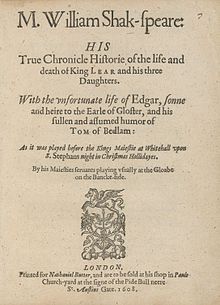
Above the cover of the original published 1608 edition of the play.
The play basically tells the story of King Lear who has three daughters. He "tests" the three for their love of him and the two oldest flatter their father, but the youngest says there are no words she can say to describe her love of her father. Lear misreads this not of great love, but of no love at all and banishes her. He than divides his Kingdom between his two remaining daughters. While the youngest daughter becomes the wife of the King of France. Who loves her even without her father's blessing and a dowry
Lear finally starts to realize his mistake and the weight of it not only to himself, but Britain starts to drive the King insane. At one point he makes the decision to run away from it all and with two faithful friends goes to live on the moors. The two daughters now control Britain, but also distrust each other. While in France word of what has happened finally reached Lear's young daughter. Who along with her husband decide to invade Britain to restore Lear to the throne.
This pits sister against sister and army against army. When the battle is over nobody has won and all three daughters are dead. Lear filled with grief over all that he has caused dies after leaving Britain to two of his most loyal friends.
I did not go into the detail of Shakespeare's "King Lear" as I had with his "Macbeth", because although people insist this was the basis for "Ran". Akira Kurosawa says it was actually Mori Motonari a Sengoku-era warlord.
MORI MOTONARI
From the website "GetHiroshima":
To keep the historical perspective of the three sons in place versus the motion picture "Ran". The first to die was Mori Takamoto on September 18, 1563. He was poisoned and his father had many samurai put to death for it. The next to die was Kikkawa Motoharu on December 25, 1586. I could not find out if his death was by natural causes, or other means. The last of the three sons to die was Kobayakawa Takakage on July 26, 1597. There is no information on his death also.
THE MOTION PICTURE "RAN"
The choice of the title "Ran" by Akira Kurosawa is very interesting. As the word "Ran" in either Japanese, or Chinese has many meanings starting with "Chaos" and including "Rebellion", "Revolt", "Disturbed" and "Confusion". All of which at times are shown in this 160 minute motion picture.
The film's plot:
The comparison to Lear rather than Kurosawa's stated Mori Motonari begins when the movie's viewer sees that Hidetora Ichimonji portrayed by Tatsuya Nakadal has a dream and decides to split his Kingdom between his three son's, The eldest Taro portrayed by Akira Terao will receive the first castle and became the leader of the Ichimonji Clan. The middle son Jiro portrayed by Jinpachi Nezuis presented with the second castle and the youngest son Saburo portrayed by Daisuke Ryu is presented with the third castle.

At this point the legend of the three arrows come into play as Lord Ichimonji lectures his three sons. Expecting that this will keep the three together and his Kingdom stable. However, the first sign this will not happen occurs when Saburo breaks the three arrows across his knee and calls his father foolish to think the three sons will remain loyal to him and each other.
Hidetora now mistakes Saburo's statements as a threat and banishes him and his servant who came to his defense.A warlord named Fujimaki is impressed by Saburo's frankness to his father and invites the young man to live with him and marry his daughter.
Akira Kurosawa screenplay is sounding more like a variation of William Shakespeare's "King Lear". Then the story of Mori Motonari's the director claimed. In fact what I could find about Motonari is unrelated in anyway to Lear.
What is interesting to me is that the story takes on a partial "Macbeth" motif as it progresses.
Lord Hidetora Ichimonji to put his plan into effect abdicates, but states he will retain the title of "The Great Lord". Enter Lady Kaede portrayed by Mieko Harada the wife of Hidetora's eldest son Taro. She is out for revenge against Taro's father for murdering her family right after their marriage. Lady Kaede starts to push her husband to take over the entire Clan and the castles of his brothers taking on the feel of Lady Macbeth.
As a result Taro wants his father to renounce the title of "Great Lord" and this causes Hidetora to leave the first Castle with his retainers and go to his second son Jiro's. Only to discover Jiro has plans to overthrow his older brother Taro. So Lord Ichimonji leaves the second castle and takes refuge in the third castle abandoned by his youngest son when he went into exile. Without warning the now combined forces of Taro and Jiro attack the third castle in a joint attempt to over throw their father completely.
As the third castle is stormed more treachery occurs when Taro is killed by a bullet fired by Kurogane one of Jiro's generals. For his safety Hidetora and a few retainers flee to the wilderness. The seemingly blending of Lear and Macbeth continues as Taro's wife Lady Kaede now attempts to seduce Jiro who is now the Lord of both the first and second castles, Lasy Kaede;s new plan is to have Jiro murder his current wife and marry her so that she retains power.
As my reader can guess, Contrary to Kurosawa's claims the youngest son Saburo's army is on the way to save his father. He comes with his father in law Fujimaki and and a new ally Ayabe and their armies. The three army's separate to attack all two main castles. While Saburo locates his father now insane from his wanderings and the events that have occurred. In his grief Lord Hidetora Ichimonji's dies as Jiro's larger force attacks Saburo's now smaller force.
When the battles are over and the viewer has come to the motion pictures end. All three of Hidetora's sons are dead and we seem to have substituted them for Lear's three daughters. As for Lord Ichimonji it seems he is also a substitute for King Lear, but once more Akira Kurosawa is adamant that he never used the Shakespeare play as a basis for "Ran", or was aware of it. I leave my reader to consider that statement,
Not only did Kurosawa move William Shakespeare from the British Isles to Japan, but he also moved the 1902 Russian Play "The Lower Depths" by Maxim Gorky to the Edo-period. This was in his 1957 motion picture "Donzoko" aka: "The Lower Depths". The same play had been made into the 1936 French film "Les bas-fonds" by the great Jean Renoir.
AKIRA KUROSAWA INTERPRETED BY OTHER DIRECTORS

The most famous interpretation of Akira Kurosawa was "The Seven Samurai" becoming "The Magnificent Seven". So lets start there.
On April 26, 1954 "The Seven Samurai" premiered in Japan. For those who know only either Kurosawa's work, or John Sturges' 1960 film "The Magnificent Seven" the basic story is the same. A bandit leader spares a village until after harvest and three farmers ask the village elder what should they do to stop the bandit when he returns. The elder suggests hiring Samurai and as the village is poor. He suggests hiring hungry Samurai.
Switch the location from Feudal Japan to the American/Mexican border of the late 1880's and the Samurai become Western Gunfighters.
The first main difference between the two motion pictures other than the settings are the films respective lengths. Kurosawa's epic is 207 minutes. While Sturges' picture is 128 minutes. The question becomes if the two stories are basically the same why the time difference of 79 minutes?
The answer comes in the development of the "Seven". Akira Kurosawa takes his time to develop the backgrounds, personalities and motivations of each of his Samurai. The viewer gets to know these hungry men and why they are there. While John Sturges' has only time to give his audience a clue. For example we know Brad Dexter's "Harry Luck" thinks there's hidden gold or silver and won't believe otherwise, because why would Chris waste his time for twenty-dollars? Robert Vaughn's "Lee" is a wanted man and needs the twenty-dollars to pay for the storeroom he was forced to hide out in. In comparison "The Magnificent Seven" are shadows to "The Seven Samurai".
Not to say the viewer is cheated by the Western. What we have here is that culture difference coming to play in the stories. American's have been watching Western motion pictures since 1903 with "The Great Train Robbery" and a certain image of the outlaw/gunfighter has developed in our mind. During the 1920's and 1930's the good guy usually wore a white hat and the bad guy a black. We immediately know by what the character is wearing, if he is a good or bad. Add in motion pictures like "Jesse James" starring Tyrone Power and Henry Fonda, or its sequel "The Return of Frank James" with Fonda and American's have accepted a glamorized version of our real outlaws. In no way did Billy the Kid look like Robert Taylor, Don "Red" Barry, Paul Newman or Kris Kristofferson.
A change to these stylized gunfighters came with films like Sam Peckinpah's "Pat Garret and Billy the Kid". As their image became more violent even if one Kristofferson's gang was played by another singer/composer Bob Dylan. However, that movie was 13 years after "The Magnificent Seven" and it still glamorized the Kid in a revisionist anti-hero way.
The casting in both movies also help us identify with the characters on the screen. "The Seven Samurai's" cast were mostly known to the Japanese audiences who watch films from Toho Studios. The leader of the group Kambei Shimada is played by Takashi Shimura. He had appeared in over 80 motion pictures by the time of "The Seven Samurai". By the end of 1954 after the April premier he would appear in eight more motion pictures including one film Shimura would forever be associated with to International Audiences "Gojira (Godzilla)" as Professor Yamani.
Toshiro Mifune plays a character who claims to be a samurai, but in truth is a peasant like the farmers the seven will help. By the date of this motion picture Mifune had appeared in 32 motion pictures. They included "Rashomon" which I will discuss next and "Stray Dog" two Japanese film classics. In both Toho films Takashi Shimura also appeared.
All the members of the cast were solid professionals and part of Toho Studio's system. The studio can be compared to a traveling stage company. Today you could be a roin in "The Seven Samurai", tomorrow a detective in " Stray Dog" and the day after fighting a prehistoric nuclear created Kaiju in "Gojira". In short Toho's studio system created well rounded actors able to play anything they were assigned and it showed on the motion picture screen.
Whereas, "The Magnificent Seven" was populated by new faces even if some had more of a television acting background. To the American viewing audience with the exception of Yul Brynner as Chris, the Takashi Shimura character, and Eli Wallach as Calvara the bandit leader no one in this cast was really known. Which was also the purpose of John Sturges in a sense to get his audience to buy into the short back story for each of the gunfighters hired by Chris, We can't truly associate anyone of the group, but Yul Brynner, Eli Wallach and perhaps Steve McQueen with any specific performance.
Wait a minute "The Magnificent Seven:" had Steve McQueen, Charles Bronson, Robert Vaughn and James Coburn in it,
True, but when Terrence Steve McQueen received third billing in "The Magnificent Seven" he was basically only known to viewers of the television series "Wanted Dead, or Alive" as Josh Randall. A part he had been playing since 1958 and if you knew who he was appearances on other television series. Prior to the John Sturges McQueen he had three films to his credit. One was the 1959 world war two picture "Never So Few" starring Frank Sinatra, Gina Lollobrigida and Peter Lawford. The forgotten 1959 "The Great St. Louis Bank Robbery" and in 1958's "The Blob", but that movie did not obtain "cult" status until after Steve McQueen became "Steve McQueen".
Charles Bronson originally Charles Buchinsky had been kicking around in early television since 1949. Prior to "The Magnificent Seven" he had appeared in a small role in the 1953 3-D classic "House of Wax" and had the title role in Roger Corman's 1958 "Machine Gun Kelly". I remember him, vaguely, starring in a short lived television series "Man with a Camera". Bronson was even in "Never So Few" listed five roles below Steve McQueen. Even after "The Magnificent Seven" he was forced back into television role appearances. Charles Bronson's movie career did not take off until 1970.
Robert Vaughn's career did not kick start until the television series "The Man from Uncle" six years after "The Magnificent Seven". Prior he guest appeared on television shows including Walt Disney's "Zorro" and "The Untouchables". His movie career wasn't much better starring in Roger Corman"s 1958 "Teenage Cave Man" and a small role in the forgotten 1959's "The Young Philadephians" starring Paul Newman and Barbara Rush.
James Coburn's early career fits in with the other three. He appeared in television programs mostly westerns. After "The Magnificent Seven" he also returned to television, but in 1962 appeared once again with McQueen in the excellent war film 1962's "Hell is for Heroes" directed by Don Siegel. This was followed by "The Great Escape" in 1963 and his career began to expand.
Brad Dexter was a face you immediately recognized, but could never put a name too. He work in television and motion pictures had him playing either a gangster, or western outlaw. Besides "The Magnificent Seven" he was seen in "The Asphalt Jungle", "Run Silent, Run Deep" and "The George Raft Story". Dexter played many western television heavies and gangster types.
We know come to the seventh gunfighter in "The Magnificent Seven" a very interesting character in two ways. The part is "Chico" and he turns out to actually be a farmer who dreams of being a famed gunfighter.
The first way is in the casting. In 1960 the idea of letting a Mexican, or Spanish actor have a critical lead role was out of the question in Hollywood. So the role of Chico was given not an American actor, but to unknown Western German actor Horst Buchholz called "The German James Dean". At the time he had appeared in 19 motion pictures, but only one the British "Tiger Bay" was in the English language.
The second way this character stays interesting is in once more illustrating the difference between the two films. Chico is actually a combination of two characters from "The Seven Samurai". Parts of this character come from Toshiro Mifune's Kikuchiyo as being a peasant who wants to be a samurai. From Isao Kimura's Katsushiro by idolizing the groups leader and looking up to and falling for one of the village girls.
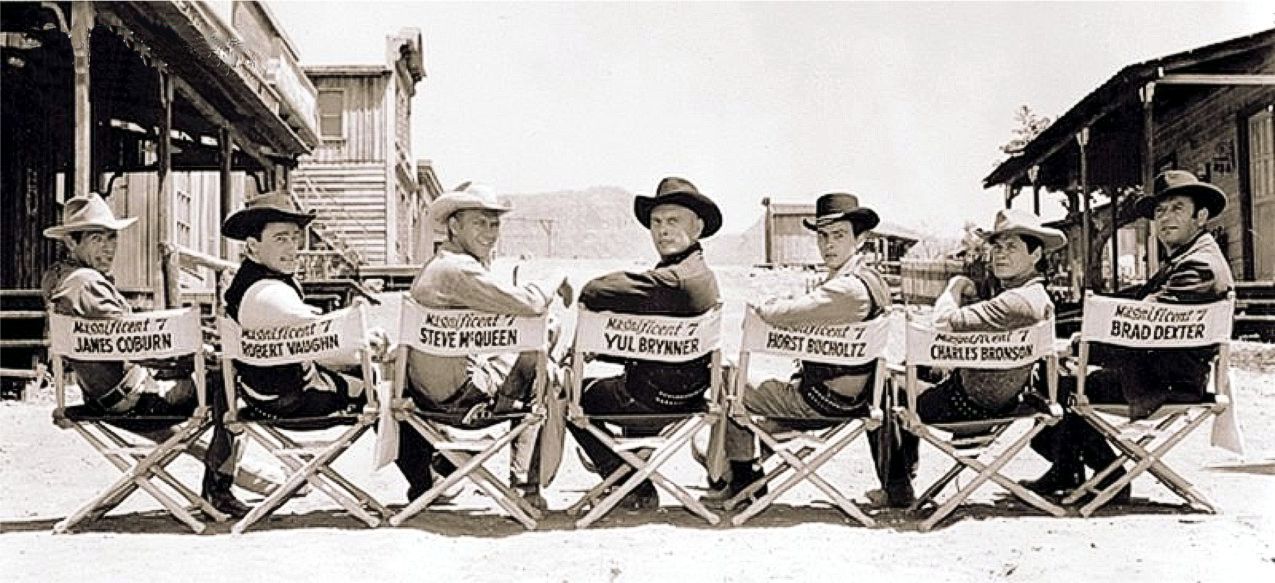
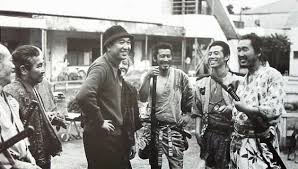
Both motion pictures are divided into four parts.
Part One: The village attacked and the decision to find professional help is made.
Part Two: The help is found and as we proceed to the village we learn a little more about each member of the "Seven",
Part Three: The defense of the village for the first time.
Part Four: The return to the village, the final fight and the death of four of the seven. The lesson learned that when all is said only the farmers and their land win.
The ending of both features can be described as either a "pyrrhic victory", or if you will a 'hollow victory". We have watched four men die for what?
The term goes back to 280 B.C. and describes the result of King Pyrrus over the Romans at Heraclea. Plutarch wrote:

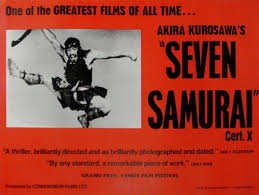


In Bert Cardullo's 2008 "Akira Kurosawa Interviewed". The director says this of "The Magnificent Seven":
"The Seven Samurai" had a budget of 125 million yen and made 268 million yen. The film has provided a plot for many other works and was remade in 1980 by Roger Corman's New World Pictures from a script by John Sayles. Where John Sturges moved the setting from Feudal Japan to the American West. John Sayles moved it to outer space as "Battle Beyond the Stars".

The story tells of the peaceful farmers on the planet Akir, note we are one letter short of Akira, who are threaten with extinction by the evil Saddor. That lack of the missing "A" is made up when the people go to the nearly blind Zed who is the last "Akira" warrior. In this instance only one person, Shad, goes in search of mercenaries to fight for the planet. A planet, like the village in "The Seven Samuari" that can only offer them food and shelter.
Obviously the evil Saddor and his weapon of planetary destruction will be defeated in perfect style by Shad's "Magnificent Seven". What is more interesting here is the cast in the film, but if you have never seen this do not dismiss it. It is a lot of fun.
Playing the evil Saddor with just the right portion of ham is John Saxon. Whose body needs replacement part in a bit in the story that brings unexpected results.

Shad is played by ex-John-Boy Walton Richard Thomas.

Then we have three very interesting members of the seven. Playing a part that is a combination of his character of Lee from "The Magnificent Seven" and Charles Bronson's Bernardo O'Reilly is Robert Vaughn in find form.

Next is George Peppard having fun with the part of Space Cowboy, need I mention why the character is here, who only knows about the American west from old movies.

The third interesting character is Sybil Danning as a Valkyrie warrior wanting to prove herself in battle and not looking to bad in her ten sizes too small outfit.

Then we have the final three of the seven,
There is the Darlanne Fluegel as a computer nerd Nanelia and Shad's love interest. Seen on the far right in the following still
We also have a reptilian slaver who world was destroyed by Saddor named Cayman played by Morgan Woodward,
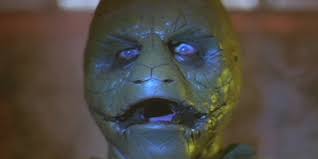
The last has to do with those body parts that are going to give Saddor problems. This is a group of being who feel and see whatever any other of the group experiences. They are called "Nestor". Earl Bowen and John Gowens play the two of the group that Shad talks with.

Saddor's spaceship along with him and his crew will be destroyed, but only Nanelia and Shad survive the attack saving the planet Akir.
Unlike "The Magnificent Seven" "Battle Beyond the Stars" had a budget of approximately $2 million dollars making it Roger Corman's most expensive film to date and on its initial release made $7,5 million dollars. The Art Director and Model Maker on the film was an unknown named James Cameron, What we do not know was if Akira Kurosawa ever saw the motion picture and if he did what he might have thought about it.,
1950'S "RASHOMON" BECOMES 1964'S "THE OUTRAGE"
The legend of the three arrows” is a, most likely apocryphal, story about the sengoku daimyo of the Chugoku region Mōri Motonari.
In hope of encouraging three of his sons, Mōri Takamoto, Kikkawa Motoharu, and Kobayakawa Takakage, to work together for the benefit of the Mōri clan. Mōri is said to have handed each of his sons an arrow and asked each snap it. After each snapped his arrow, Motonari produced three arrows and asked his sons to snap all three at once. When they were unable to do so, Motonari explained that one arrow could be broken easily, but three arrows held together could not.
It is a lesson that is still taught today in Japanese schools and is believed to have been a source of inspiration for Akira Kurosawa when writing his epic film Ran.Although these three son's are the one's of the legend. Those three and a daughter were from his wife, but there was another six sons and a daughter were from two of his consorts.
To keep the historical perspective of the three sons in place versus the motion picture "Ran". The first to die was Mori Takamoto on September 18, 1563. He was poisoned and his father had many samurai put to death for it. The next to die was Kikkawa Motoharu on December 25, 1586. I could not find out if his death was by natural causes, or other means. The last of the three sons to die was Kobayakawa Takakage on July 26, 1597. There is no information on his death also.
THE MOTION PICTURE "RAN"
The choice of the title "Ran" by Akira Kurosawa is very interesting. As the word "Ran" in either Japanese, or Chinese has many meanings starting with "Chaos" and including "Rebellion", "Revolt", "Disturbed" and "Confusion". All of which at times are shown in this 160 minute motion picture.
The film's plot:
The comparison to Lear rather than Kurosawa's stated Mori Motonari begins when the movie's viewer sees that Hidetora Ichimonji portrayed by Tatsuya Nakadal has a dream and decides to split his Kingdom between his three son's, The eldest Taro portrayed by Akira Terao will receive the first castle and became the leader of the Ichimonji Clan. The middle son Jiro portrayed by Jinpachi Nezuis presented with the second castle and the youngest son Saburo portrayed by Daisuke Ryu is presented with the third castle.
At this point the legend of the three arrows come into play as Lord Ichimonji lectures his three sons. Expecting that this will keep the three together and his Kingdom stable. However, the first sign this will not happen occurs when Saburo breaks the three arrows across his knee and calls his father foolish to think the three sons will remain loyal to him and each other.
Hidetora now mistakes Saburo's statements as a threat and banishes him and his servant who came to his defense.A warlord named Fujimaki is impressed by Saburo's frankness to his father and invites the young man to live with him and marry his daughter.
Akira Kurosawa screenplay is sounding more like a variation of William Shakespeare's "King Lear". Then the story of Mori Motonari's the director claimed. In fact what I could find about Motonari is unrelated in anyway to Lear.
What is interesting to me is that the story takes on a partial "Macbeth" motif as it progresses.
Lord Hidetora Ichimonji to put his plan into effect abdicates, but states he will retain the title of "The Great Lord". Enter Lady Kaede portrayed by Mieko Harada the wife of Hidetora's eldest son Taro. She is out for revenge against Taro's father for murdering her family right after their marriage. Lady Kaede starts to push her husband to take over the entire Clan and the castles of his brothers taking on the feel of Lady Macbeth.
As a result Taro wants his father to renounce the title of "Great Lord" and this causes Hidetora to leave the first Castle with his retainers and go to his second son Jiro's. Only to discover Jiro has plans to overthrow his older brother Taro. So Lord Ichimonji leaves the second castle and takes refuge in the third castle abandoned by his youngest son when he went into exile. Without warning the now combined forces of Taro and Jiro attack the third castle in a joint attempt to over throw their father completely.
As the third castle is stormed more treachery occurs when Taro is killed by a bullet fired by Kurogane one of Jiro's generals. For his safety Hidetora and a few retainers flee to the wilderness. The seemingly blending of Lear and Macbeth continues as Taro's wife Lady Kaede now attempts to seduce Jiro who is now the Lord of both the first and second castles, Lasy Kaede;s new plan is to have Jiro murder his current wife and marry her so that she retains power.
As my reader can guess, Contrary to Kurosawa's claims the youngest son Saburo's army is on the way to save his father. He comes with his father in law Fujimaki and and a new ally Ayabe and their armies. The three army's separate to attack all two main castles. While Saburo locates his father now insane from his wanderings and the events that have occurred. In his grief Lord Hidetora Ichimonji's dies as Jiro's larger force attacks Saburo's now smaller force.
When the battles are over and the viewer has come to the motion pictures end. All three of Hidetora's sons are dead and we seem to have substituted them for Lear's three daughters. As for Lord Ichimonji it seems he is also a substitute for King Lear, but once more Akira Kurosawa is adamant that he never used the Shakespeare play as a basis for "Ran", or was aware of it. I leave my reader to consider that statement,
Not only did Kurosawa move William Shakespeare from the British Isles to Japan, but he also moved the 1902 Russian Play "The Lower Depths" by Maxim Gorky to the Edo-period. This was in his 1957 motion picture "Donzoko" aka: "The Lower Depths". The same play had been made into the 1936 French film "Les bas-fonds" by the great Jean Renoir.
AKIRA KUROSAWA INTERPRETED BY OTHER DIRECTORS
The most famous interpretation of Akira Kurosawa was "The Seven Samurai" becoming "The Magnificent Seven". So lets start there.
On April 26, 1954 "The Seven Samurai" premiered in Japan. For those who know only either Kurosawa's work, or John Sturges' 1960 film "The Magnificent Seven" the basic story is the same. A bandit leader spares a village until after harvest and three farmers ask the village elder what should they do to stop the bandit when he returns. The elder suggests hiring Samurai and as the village is poor. He suggests hiring hungry Samurai.
Switch the location from Feudal Japan to the American/Mexican border of the late 1880's and the Samurai become Western Gunfighters.
The first main difference between the two motion pictures other than the settings are the films respective lengths. Kurosawa's epic is 207 minutes. While Sturges' picture is 128 minutes. The question becomes if the two stories are basically the same why the time difference of 79 minutes?
The answer comes in the development of the "Seven". Akira Kurosawa takes his time to develop the backgrounds, personalities and motivations of each of his Samurai. The viewer gets to know these hungry men and why they are there. While John Sturges' has only time to give his audience a clue. For example we know Brad Dexter's "Harry Luck" thinks there's hidden gold or silver and won't believe otherwise, because why would Chris waste his time for twenty-dollars? Robert Vaughn's "Lee" is a wanted man and needs the twenty-dollars to pay for the storeroom he was forced to hide out in. In comparison "The Magnificent Seven" are shadows to "The Seven Samurai".
Not to say the viewer is cheated by the Western. What we have here is that culture difference coming to play in the stories. American's have been watching Western motion pictures since 1903 with "The Great Train Robbery" and a certain image of the outlaw/gunfighter has developed in our mind. During the 1920's and 1930's the good guy usually wore a white hat and the bad guy a black. We immediately know by what the character is wearing, if he is a good or bad. Add in motion pictures like "Jesse James" starring Tyrone Power and Henry Fonda, or its sequel "The Return of Frank James" with Fonda and American's have accepted a glamorized version of our real outlaws. In no way did Billy the Kid look like Robert Taylor, Don "Red" Barry, Paul Newman or Kris Kristofferson.
A change to these stylized gunfighters came with films like Sam Peckinpah's "Pat Garret and Billy the Kid". As their image became more violent even if one Kristofferson's gang was played by another singer/composer Bob Dylan. However, that movie was 13 years after "The Magnificent Seven" and it still glamorized the Kid in a revisionist anti-hero way.
The casting in both movies also help us identify with the characters on the screen. "The Seven Samurai's" cast were mostly known to the Japanese audiences who watch films from Toho Studios. The leader of the group Kambei Shimada is played by Takashi Shimura. He had appeared in over 80 motion pictures by the time of "The Seven Samurai". By the end of 1954 after the April premier he would appear in eight more motion pictures including one film Shimura would forever be associated with to International Audiences "Gojira (Godzilla)" as Professor Yamani.
Toshiro Mifune plays a character who claims to be a samurai, but in truth is a peasant like the farmers the seven will help. By the date of this motion picture Mifune had appeared in 32 motion pictures. They included "Rashomon" which I will discuss next and "Stray Dog" two Japanese film classics. In both Toho films Takashi Shimura also appeared.
All the members of the cast were solid professionals and part of Toho Studio's system. The studio can be compared to a traveling stage company. Today you could be a roin in "The Seven Samurai", tomorrow a detective in " Stray Dog" and the day after fighting a prehistoric nuclear created Kaiju in "Gojira". In short Toho's studio system created well rounded actors able to play anything they were assigned and it showed on the motion picture screen.
Whereas, "The Magnificent Seven" was populated by new faces even if some had more of a television acting background. To the American viewing audience with the exception of Yul Brynner as Chris, the Takashi Shimura character, and Eli Wallach as Calvara the bandit leader no one in this cast was really known. Which was also the purpose of John Sturges in a sense to get his audience to buy into the short back story for each of the gunfighters hired by Chris, We can't truly associate anyone of the group, but Yul Brynner, Eli Wallach and perhaps Steve McQueen with any specific performance.
Wait a minute "The Magnificent Seven:" had Steve McQueen, Charles Bronson, Robert Vaughn and James Coburn in it,
True, but when Terrence Steve McQueen received third billing in "The Magnificent Seven" he was basically only known to viewers of the television series "Wanted Dead, or Alive" as Josh Randall. A part he had been playing since 1958 and if you knew who he was appearances on other television series. Prior to the John Sturges McQueen he had three films to his credit. One was the 1959 world war two picture "Never So Few" starring Frank Sinatra, Gina Lollobrigida and Peter Lawford. The forgotten 1959 "The Great St. Louis Bank Robbery" and in 1958's "The Blob", but that movie did not obtain "cult" status until after Steve McQueen became "Steve McQueen".
Charles Bronson originally Charles Buchinsky had been kicking around in early television since 1949. Prior to "The Magnificent Seven" he had appeared in a small role in the 1953 3-D classic "House of Wax" and had the title role in Roger Corman's 1958 "Machine Gun Kelly". I remember him, vaguely, starring in a short lived television series "Man with a Camera". Bronson was even in "Never So Few" listed five roles below Steve McQueen. Even after "The Magnificent Seven" he was forced back into television role appearances. Charles Bronson's movie career did not take off until 1970.
Robert Vaughn's career did not kick start until the television series "The Man from Uncle" six years after "The Magnificent Seven". Prior he guest appeared on television shows including Walt Disney's "Zorro" and "The Untouchables". His movie career wasn't much better starring in Roger Corman"s 1958 "Teenage Cave Man" and a small role in the forgotten 1959's "The Young Philadephians" starring Paul Newman and Barbara Rush.
James Coburn's early career fits in with the other three. He appeared in television programs mostly westerns. After "The Magnificent Seven" he also returned to television, but in 1962 appeared once again with McQueen in the excellent war film 1962's "Hell is for Heroes" directed by Don Siegel. This was followed by "The Great Escape" in 1963 and his career began to expand.
Brad Dexter was a face you immediately recognized, but could never put a name too. He work in television and motion pictures had him playing either a gangster, or western outlaw. Besides "The Magnificent Seven" he was seen in "The Asphalt Jungle", "Run Silent, Run Deep" and "The George Raft Story". Dexter played many western television heavies and gangster types.
We know come to the seventh gunfighter in "The Magnificent Seven" a very interesting character in two ways. The part is "Chico" and he turns out to actually be a farmer who dreams of being a famed gunfighter.
The first way is in the casting. In 1960 the idea of letting a Mexican, or Spanish actor have a critical lead role was out of the question in Hollywood. So the role of Chico was given not an American actor, but to unknown Western German actor Horst Buchholz called "The German James Dean". At the time he had appeared in 19 motion pictures, but only one the British "Tiger Bay" was in the English language.
The second way this character stays interesting is in once more illustrating the difference between the two films. Chico is actually a combination of two characters from "The Seven Samurai". Parts of this character come from Toshiro Mifune's Kikuchiyo as being a peasant who wants to be a samurai. From Isao Kimura's Katsushiro by idolizing the groups leader and looking up to and falling for one of the village girls.

Both motion pictures are divided into four parts.
Part One: The village attacked and the decision to find professional help is made.
Part Two: The help is found and as we proceed to the village we learn a little more about each member of the "Seven",
Part Three: The defense of the village for the first time.
Part Four: The return to the village, the final fight and the death of four of the seven. The lesson learned that when all is said only the farmers and their land win.
The ending of both features can be described as either a "pyrrhic victory", or if you will a 'hollow victory". We have watched four men die for what?
The term goes back to 280 B.C. and describes the result of King Pyrrus over the Romans at Heraclea. Plutarch wrote:
The armies separated; and, it is said, Pyrrhus replied to one that gave him joy of his victory that one other such victory would utterly undo him. For he had lost a great part of the forces he brought with him, and almost all his particular friends and principal commanders; there were no others there to make recruits, and he found the confederates in Italy backward. On the other hand, as from a fountain continually flowing out of the city, the Roman camp was quickly and plentifully filled up with fresh men, not at all abating in courage for the loss they sustained, but even from their very anger gaining new force and resolution to go on with the warIn the battle at Heraclea the Roman's losses were the greater, but King Pyrrus had less men to start with and it was felt more.
In Bert Cardullo's 2008 "Akira Kurosawa Interviewed". The director says this of "The Magnificent Seven":
The American copy of the The Magnificent Seven is a disappointment, although entertaining. It is not a version of Seven Samurai"The Magnificent Seven" was a box office failure in the United States, but became a hit in Europe eventually resulting in three sequels, a short lived television version and a remake set to be released later this year 2016.
"The Seven Samurai" had a budget of 125 million yen and made 268 million yen. The film has provided a plot for many other works and was remade in 1980 by Roger Corman's New World Pictures from a script by John Sayles. Where John Sturges moved the setting from Feudal Japan to the American West. John Sayles moved it to outer space as "Battle Beyond the Stars".
The story tells of the peaceful farmers on the planet Akir, note we are one letter short of Akira, who are threaten with extinction by the evil Saddor. That lack of the missing "A" is made up when the people go to the nearly blind Zed who is the last "Akira" warrior. In this instance only one person, Shad, goes in search of mercenaries to fight for the planet. A planet, like the village in "The Seven Samuari" that can only offer them food and shelter.
Obviously the evil Saddor and his weapon of planetary destruction will be defeated in perfect style by Shad's "Magnificent Seven". What is more interesting here is the cast in the film, but if you have never seen this do not dismiss it. It is a lot of fun.
Playing the evil Saddor with just the right portion of ham is John Saxon. Whose body needs replacement part in a bit in the story that brings unexpected results.
Shad is played by ex-John-Boy Walton Richard Thomas.

Then we have three very interesting members of the seven. Playing a part that is a combination of his character of Lee from "The Magnificent Seven" and Charles Bronson's Bernardo O'Reilly is Robert Vaughn in find form.
Next is George Peppard having fun with the part of Space Cowboy, need I mention why the character is here, who only knows about the American west from old movies.
The third interesting character is Sybil Danning as a Valkyrie warrior wanting to prove herself in battle and not looking to bad in her ten sizes too small outfit.
Then we have the final three of the seven,
There is the Darlanne Fluegel as a computer nerd Nanelia and Shad's love interest. Seen on the far right in the following still
We also have a reptilian slaver who world was destroyed by Saddor named Cayman played by Morgan Woodward,
The last has to do with those body parts that are going to give Saddor problems. This is a group of being who feel and see whatever any other of the group experiences. They are called "Nestor". Earl Bowen and John Gowens play the two of the group that Shad talks with.

Saddor's spaceship along with him and his crew will be destroyed, but only Nanelia and Shad survive the attack saving the planet Akir.
Unlike "The Magnificent Seven" "Battle Beyond the Stars" had a budget of approximately $2 million dollars making it Roger Corman's most expensive film to date and on its initial release made $7,5 million dollars. The Art Director and Model Maker on the film was an unknown named James Cameron, What we do not know was if Akira Kurosawa ever saw the motion picture and if he did what he might have thought about it.,
1950'S "RASHOMON" BECOMES 1964'S "THE OUTRAGE"
Origin of the title "Rashomon":
The characters in the Japanese title (羅生門 literally stand for "Castle Gate".
The original use of "Rashomon", or "Rajomon" was as the name given to the gate at the southern end of Suzaku Avenue, in Heian-kyo, now Kyoto, that leads to the Imperial Palace in that city. At one time in Japan's past, unclaimed corpses would be dumped at the southern gate. The first story about "Rashomon" was from a Noh play by Kanze Nobumitsu around 1420, and was about a servant and an old woman meeting there. In 1915, the writer Teikoku Bungaku wrote a shot story based upon that incident, also called "Rashomon". In 1922, Teikoku wrote a second short story called "In the Grove". In 1950, Akira Kurosawa took the title "Rashomon" and the setting from the 1915 story and the plot from the 1922 story to create his screenplay for his motion picture.
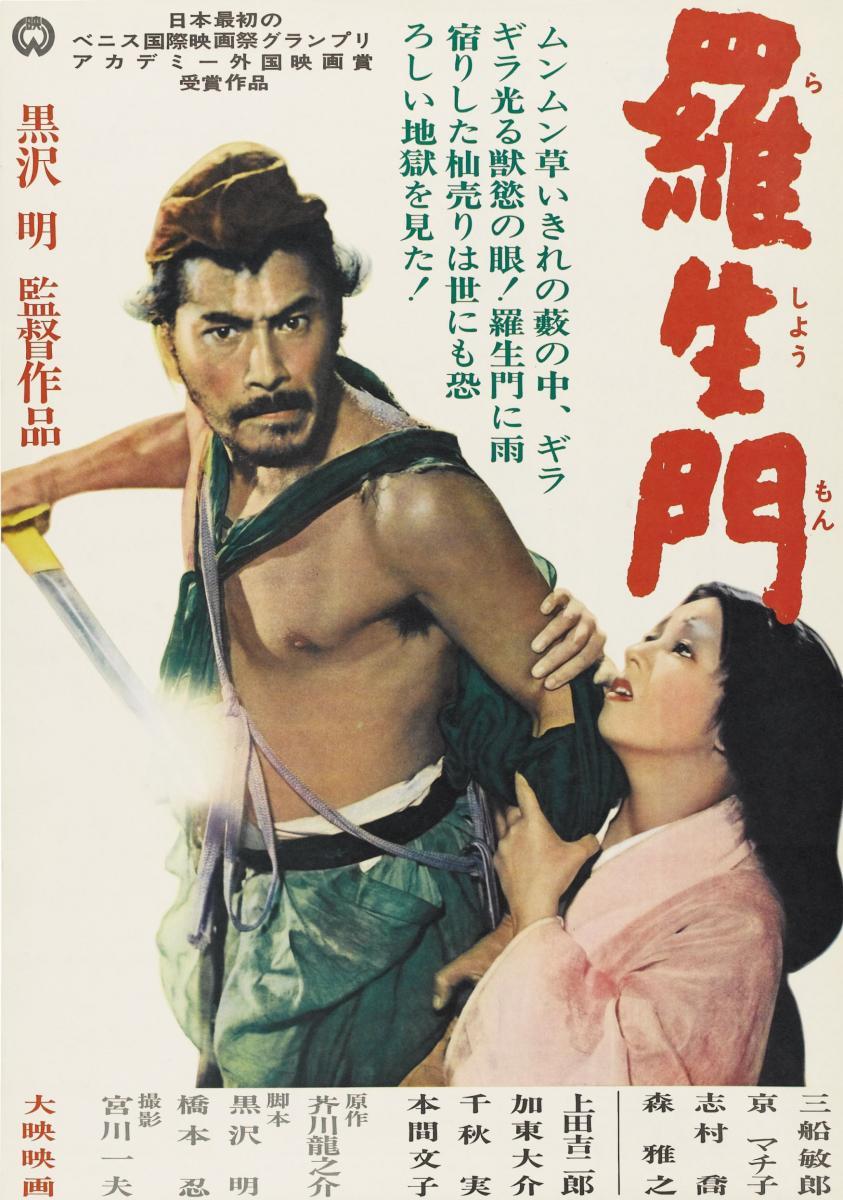

One of the biggest problems facing an investigation of a crime occurs when there are more than one witness and each seems to contradict the others. This is the simple plot to the original story and the film.
A Woodcutter, a Samurai, his Wife, and a Bandit. Four people involved in a rape and murder, but who is telling the truth, or are we even hearing the truth?
Instead of a servant and an old woman, the movie opens with a "The Priest", portrayed by Minoru Chiaki, sitting at the Southern Gate with a "Woodcutter", portrayed by Takashi Shimura. The gate provides both with some shelter from the falling rain. Enter a "Commoner", portrayed by Kichijiro Ueda. The Priest and Woodcutter begin to tell "The Commoner" of the events at a trial they took part in.
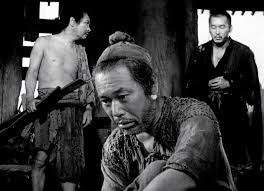
The characters in the Japanese title (羅生門 literally stand for "Castle Gate".
The original use of "Rashomon", or "Rajomon" was as the name given to the gate at the southern end of Suzaku Avenue, in Heian-kyo, now Kyoto, that leads to the Imperial Palace in that city. At one time in Japan's past, unclaimed corpses would be dumped at the southern gate. The first story about "Rashomon" was from a Noh play by Kanze Nobumitsu around 1420, and was about a servant and an old woman meeting there. In 1915, the writer Teikoku Bungaku wrote a shot story based upon that incident, also called "Rashomon". In 1922, Teikoku wrote a second short story called "In the Grove". In 1950, Akira Kurosawa took the title "Rashomon" and the setting from the 1915 story and the plot from the 1922 story to create his screenplay for his motion picture.


One of the biggest problems facing an investigation of a crime occurs when there are more than one witness and each seems to contradict the others. This is the simple plot to the original story and the film.
A Woodcutter, a Samurai, his Wife, and a Bandit. Four people involved in a rape and murder, but who is telling the truth, or are we even hearing the truth?
Instead of a servant and an old woman, the movie opens with a "The Priest", portrayed by Minoru Chiaki, sitting at the Southern Gate with a "Woodcutter", portrayed by Takashi Shimura. The gate provides both with some shelter from the falling rain. Enter a "Commoner", portrayed by Kichijiro Ueda. The Priest and Woodcutter begin to tell "The Commoner" of the events at a trial they took part in.
We start first, with the events of what becomes both the rape of a Samurai's Wife and his death told from the point of view of the "Bandit, Tajomaru", portrayed by Toshiro Mifune. He claims to have gotten the two to go with him to look at a cache of ancient swords. He overwhelms the Samurai and ties him to a tree and then rapes his Wife in front of him.
In this version, the Wife, after attempting to kill herself with a dagger, begs the Bandit to duel her husband to save her from the guilt and shame of being raped. The Bandit unties the Samurai, and they duel with the Bandit killing the other. This version makes the Bandit seem extremely cunning, but honorable. However, he admits forgetting about an expensive dagger owned by the samurai's wife.
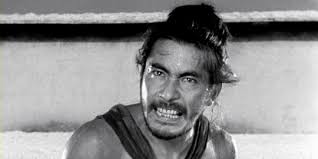
In this version, the Wife, after attempting to kill herself with a dagger, begs the Bandit to duel her husband to save her from the guilt and shame of being raped. The Bandit unties the Samurai, and they duel with the Bandit killing the other. This version makes the Bandit seem extremely cunning, but honorable. However, he admits forgetting about an expensive dagger owned by the samurai's wife.
Next, we have the story of the "Samurai's Wife, Masago", portrayed by Machiko Kyo, and it is very different. She claims the Bandit left after raping her and she untied her husband. She begged her husband to forgive her shame, but his look said otherwise. She then asked him to kill her as she held the dagger. As her husband continued to stare at her in disgust, she fainted. Waking up, the Wife discovered her husband's body with the dagger in it, and attempted, but failed in killing herself.
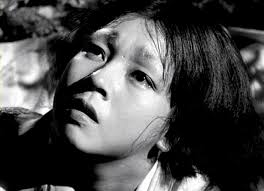
The third version of these events, is told by "The Samurai, Kanazawa no Takehiro", portrayed by Masayuki Mori. His story is told through the use of a Medium, who brings his spirit to the court. He claims that after being raped, his Wife asked to travel with the Bandit, but adding, that the Bandit needed to kill her husband, so she would not feel owned by two different men. Instead, the Bandit asked the Samurai, if he wants his Wife let go, or killed? She runs away and the Bandit goes after her, but couldn't find the Wife and returned to the tied up Samurai. He frees him and leaves. The Samurai then kills himself with his Wife's dagger. Later, the spirit says somebody unknown to him, removed the dagger from his chest.
The Woodcutter tells the Commoner that all three stories are falsehoods and he witnessed the Samurai being killed by a sword, not a dagger. The Commoner pressures the Woodcutter to admit he saw the actual murder, but lied to avoid getting in trouble with the court.
The Woodcutter's story, "Tajomaru" begged "Masago" to marry him. Instead, she frees her husband, expecting him to kill her rapist. Instead, "Kanazawa no Takehiro" refuses to fight, afraid he could be killed over a ruined woman. The Bandit takes back his promise to marry the Wife. She rebukes both men over failing to keep their promises to her, and both men unwittingly enter into a duel. The samurai is disarmed and begs the Bandit for his life, but is killed instead. The Wife flees the scene, the Bandit steals the Samurai's sword and injured limps away,
Next, the Woodcutter, the Priest, and the Commoner hear a baby crying and follow the sound to the baby. The three find the baby with a kimono and an amulet, abandoned by its parents. The Commoner steals the kimono and the amulet and is rebuked by the Woodcutter. At which point, the Commoner deduces that the Woodcutter actually lied, because he has stolen the Wife's dagger to sell for food.
The Woodcutter is attempting to calm the baby after the departure of the Commoner. While the Priest states he has lost his faith in humanity from the events of the trial and the fact that the Commoner has stolen the items found with the baby. The Woodcutter tells him that he intends to raise the baby as his own, restoring the Priest's faith in men as the rain has stopped and sun starts to rise.
In 1964 director Martin Ritt used the same two stories as sources and the motion picture to make "The Outrage". For the second time Feudal Japan was moved by a filmmaker to the American West of the 1870's. The picture had an outstanding cast.

The story is pretty much Akira Kurosawa's 1950 motion picture. Playing the Mexican Bandit Juan Carrasco with stereotypical accident in unusual casting was Paul Newman. Once more the choice is not only based upon Newman's acting and star power, but that fact that Hollywood would not cast a Hispanic actor in a major part let alone the lead.

Playing the part of the Samurai now Southern Colonel Wakefield is Lawrence Harvey.

Playing the wife is actress Claire Bloom.

Portraying a Con Man instead of the Commoner is Edward G. Robinson. Fitting the American West is a Preacher instead of the Priest played by William Shatner and the story's Woodcutter has become a down on his luck Prospector played by Howard Da Silva.

As you can see the pieces are all in place in "The Outrage" for an Americanization of "Rashomon" even more so than "The Magnificent Seven", As this movie is almost a scene by scene reshoot of Akira Kurosawa's motion picture by Martin Ritt, but just moved in time, location and character names. The advantage for Ritt over Sturges is that he doesn't have to worry about backgrounds for his characters, or motivations as the four narratives provide all the audience requires as the story adapts itself to any culture very well as unfortunately in every culture we have rape and murder.
1961'S "YOJIMBO" BECOMES AN AMERICAN WESTERN MADE IN ITALY
Both "The Seven Samurai" and "Rashomon" were turned into Westerns by American's who knew the period very well and the culture of the country, but what about changing the location of another of Akira Kurosawa's motion pictures from Japan into the American Old West by a director whose culture is as Foreign to America as to Japan?
The movie was Akira Kurosawa's 1961 "Yojimbo" starring once again Toshiro Mifune and his co-star from "Spider Web Castle (Throne of Blood)" and "The Lower Depths" Isuzu Yamada.

The period of this film is interesting as it is at the end of the Tokugawa shogunate in the year 1860 and the year before the American Civil War begins to put it in perspective.
However, before we even talk about the transition we must look at the source for this movie and the surprise is according to Akira Kurosawa American author Dashiell Hammet the creator of Sam Spade and Nick and Nora Charles of the "Thin Man" series. According to the director it was the 1942 motion picture "The Glass Key" that he used as his scenario's basis, but some believe Kurosawa meant the 1929 novel "Red Harvest". So lets take a look
The novel "The Glass Key" was published in 1931. The 1935 motion picture starred George Raft as Ed Beaumont whose first name was Ned in the novel and Edward Arnold as Crime Boss Paul Madvig. The 1942 remake referenced by Akira Kurosawa starred Alan Ladd as Ed Beaumont Madvig's right hand man and Brian Donlevy as Madvig. Donlevy's Paul Madvig was more a political boss than Arnold's.
In the 1942 picture Brian Donlevy's Madvig has fallen in love with Gubernatorial candidate Ralph Henry's daughter Janet played by Veronica Lake, Henry wants Madvig's help with his campaign, In the novel he is Senator Ralph Henry. Ed Beaumont figures out that Janet Henry is just playing Paul to help her father.
Also involved is a rival gangster named Nick Varna who Madvig had been protecting from the police. Paul tells Varna he will no longer help him as he is planning to help Henry clean up the state and become Governor.
Meanwhile Henry's son Taylor played by Richard Denning is always getting himself in trouble and especially with gambling debts, Taylor is found dead and Madvig is now the prime suspect. At first it appears Nick Varna is setting up Paul Madvig for the murder. However, Beaumont believes Janet knows who really killed her brother and convinces the District Attorney to arrest her for the murder. As Beaumont expected her father confesses he was struggling with Taylor causing him to fall and hit his head resulting in Taylor's death. The film ends with Ed and Janet talking about their future and Paul and Ed still friends. Although Paul takes back the expensive engagement ring he gave Janet.

There are some differences between the screenplay to the 1942 picture and the original novel besides the Ned to Ed change. In the novel it is clear that Paul Madvig is a dangerous gang boss just like Shad O'Rory his rival. Who in the 1942 film was renamed Nick Varna. Although he remained Shad O'Rory in the 1935 George Raft feature. As I said in the 1942 movie Paul Madvig is now more a political crime boss than a straight gangster like his character in either the 1931 novel, or 1935 picture. Also in the novel Ralph Henry is a corrupt Senator and not just a candidate for Governor. A major difference also finds Janet and Ned Beaumont pairing up to solve the murder of her brother Taylor and clearing Paul. The two discover that Senator Henry outright murdered his son and at the end Ned and Paul go there separate ways and are no longer friends.
So what about the novel "Red Harvest"?
An Operator (Ops) for the San Francisco Branch of the Continental Detective Agency arrives in the town of Personville called by the locals "Poisonville", He was to meet with newspaper publisher Donald Willsson about gang activity, but Willsson was murdered prior to the "Ops" arrival.
Donald's father Elihu Willsson the local Industrialist has had control of Personville for a very long time. However, he had a labor problem and called in several gangs to help him enforce his will on the labor leaders and other townspeople. Also setting up his own Police Force. Now he is faced with those gangs not only wanting to take over the town, but are infighting with each other.
Investigating the "Ops" starts to spend time with Dinah Brand a possible love interest of Donald Willsson and the companion for gang leader Max "Whisper" Thaler. Using information from Brand and the crooked Police Chief Noolan the "Ops" spread incriminating evidence to the local gangs about a bank robbery. A gang war starts between them. While spending the night with Dinah Brand the "Ops" wakes up the next morning to find her stabbed to death with an ice pick he had handled.
Now the prime suspect the "Ops" convinces Reno Starkey a lieutenant in one of the last gangs to take on the other remaining one. When the "Ops" finds Starkey after the last gang battle. Starkey is dying and reveals he was the one who killed Dinah Brand.
As the smoke clears after all of this the crooked Police Chief and the gang leaders are all dead. The "Ops" having information on all the activities in Personville blackmails Elihu Willsson. The Industrialist is forced to call the Governor and ask for the National Guard to clean up whats left of the gangs. As a result to his advance Elihu is now back in total control of Personville, The "Ops" is cleared of Dinah Branch's murder and he leaves.
What we have are two different stories and if you are ahead of me you might know which seems more like "Yojimbo" than the other. So lets take a look at Ryuzo Kikushima and Akira Kurosawa screenplay.


A ronin played by Toshiro Mifune is wandering from town to town and comes into one that he discovers is claimed by two rival gangsters Seibei the weaker and Ushitora the stronger. What town's people there are have found themselves in the middle of a gang war.
The stranger comes to the one inn in the town, but the innkeeper advises him of the situation and suggests he leave before he is killed. The Mifune thinks the situation over and advises the innkeeper that he believes the town would be better off, if both sides were dead. So he will stay in his inn which is in the exact center between the two gangs.
I need not go any further for those who are familiar with Italian director Sergio Leone's "Per un pugno di dollari (A Fistful of Dollars)".


Toshiro Mifune is the original "Man with no Name", because of the way he introduces himself, The samurai looks out the inn's window and sees a Mulberry Field which in Japanese is "Kuwabatake". His answer is "Kuwabatake Sanjuro", but note the last part of his name "Sanjuro". It is in Japanese a proper name, but it also means "30 years old" depending on how it is written in the language .三十郎, or 三十老 with two different last kanji. The strangers adds "though I'm not forty" which means his name is "Mulberry Field 30 years old".
It should be also noted that "The Man with No Name" has a name in each of the three films of Sergio Leone's trilogy. In "A Fistful of Dollars" he is called "Joe". In "For A Few Dollars More" he is called "Manco" which is Spanish for "one armed" as he does everything, but shoot with only his left arm and hand. In "The Good, the Bad and the Ugly" he is called "Blondie". So although these names are never the same they go back to the way the ronin names himself in "Yojimbo".
At this point in either of the two motion pictures it would appear Akira Kurosawa is using the Dashiell Hammet novel "Red Harvest" as his source material. The point argued by Kurosawa scholar David Dresser and the late film critic Manny Ferber and not either the 1942 motion picture "The Glass Key" as Kurosawa has stated was "Yojimbo's" inspiration. I would add that in "Red Harvest" and a group of other related novels the "hero", or more closely the "anti-hero" is only referred too as "Ops". This is not obviously his real name, but as in both Kurosawa and Leone something for the reader/audience to identify him with.
The question raised is why would Akira Kurosawa insist that he was using the 1942 motion picture over the 1929 novel? We are experiencing deja vu as with Kurosawa claiming he never read William Shakespeare's play "King Lear" when writing the script for "Ran". Is he playing games with us? We will never know.
Actually it should be also noted that "A Fistful of Dollars" was an unauthorized remake of "Yojimbo", but as with Kurosawa Sergio Leone denied he was doing that.
As for casting the lead actor in "Yojimbo" as I mentioned above Toho Studio's was run like a traveling stage company and Toshiro Mifune was "assigned" the role as part of his contract with the studio. Whereas as most people know Clint Eastwood wasn't the first choice for the lead in the Italian/Spanish/West German production. Originally Leone wanted Henry Fonda to play the role, but was told the production company could not afford him. So he was never asked, but would appear against character in Sergio Leone's classic "Once Upon the Time in the West".
The first actor actually sought for the part was Charles Bronson who argued the script was terrible. Bronson was followed by a list of names Henry SIlva, Rory Calhoun, Tony Russel an American doing sword and sandal Italian films, Steve Reeves, Ty Hardin, James Corburn and finally Richard Harrison a popular American actor in Italy and France. Harrison suggested Clint Eastwood, but the part was first offered to Eastwood's "Rawhide' co-star Eric Fleming who turned it down to do a motion picture "High Jungle" in Peru. He was killed when a canoe in a scene Fleming was filming overturned and the strong river current swept him away. So finally the Italian director asked Eastwood. According to the French website "Nanarland,com" in an interview with the actor about Richard Harrison Clint Eastwood stated:
In "Yojimbo" there is a sequence which will be done differently in "A Fistful of Dollars", but serves the same purpose. In Kurosawa's film a Government Official is called away from the town. Sanjuro learns that the stronger of the two gang leaders hired two men to kill him some 24 miles away from the town. To stir things up Sanjuro captures the two killers and sells them to the weaker leader explaining what has occurred. He then goes to the stronger and tells him that the weaker has captured the two men.
In "A Fistful of Dollars" Joe witnesses the stronger leader's gang rob an kill a detachment of Mexican soldiers guarding a shipment of gold. He takes two of the dead bodies of the gang members he finds at the scene to a cemetery. He then places the bodies against two grave markers as if they are still alive. Joe then informs each gang of the robbery and murders, but adds that two of the gang survived and were they can be found. The weaker gang leader and his men head to the cemetery to capture the two survivors to use against the stronger. While the stronger and his mean head to the cemetery to make sure the two survivors don't remain alive.
Then there is the story of the women, her husband and son which are almost identical in both motion pictures. As is the eventual capture of Sanjuro/Joe, his savage beating and being left for dead, his recuperation and revenge ending the two pictures.


Another aspect for comparison of the two features might be called their "look, or style" and "The Magnificent Seven" and "The Outrage" should be factored in here. In short how does the motion picture reflect the real culture of the country and time period shown?
All of Kurosawa's motion pictures I've mention involved Samurai and peasants from different era's However, even into the 1860's when Western clothing designs were catching on. The main clothing worn by the Japanese was a kimono with only the material and designs being heightened by a person's status. As for the Warrior, or Samurai the following comes from the website "samurai archives":
http://www.samurai-archives.com/clothing.html
I bring this up, because the clothing worn in all of Akira Kuroshawa's films were accurate. The same can not be said for two of the three remakes.
Take a look at this picture from "The Magnificent Seven" which takes place in the 1880's to early 1890's when civilization was taking over the "Old West".

Look's like a tough bunch of gunfighters, but the problem is this is Hollywood style. Everyone of the seven are clean shaven and except for Yul Brynner have nice haircuts. All of their clothes are pretty clean too even if somewhat wrinkled. I love Robert Vaughn's gambler style outfits that seemed to be perfectly ironed and clean whenever we see him prior to the first shoot out with Calvara and his bunch.
Can't blame John Sturges or Executive Producer Walter Mirisch for the lack of accuracy as they depend upon their subordinates and crew. I could blame Bert Henrikson who was from the "Costume and Wardrobe Department" , but the poor guy didn't even receive screen credit. The problem here is that during the mid to late 1950's on television were a series of westerns shows that set the viewers conception of what a cowboy and a gunfighter looked like. In fact Hollywood had been doing that since the silents, but with television coming into your living room daily. The image of that perfect gambler, gunfighter, cattle drover, or lawman was set in our minds.
The Gambler was "Bret Maverick" played by James Garner
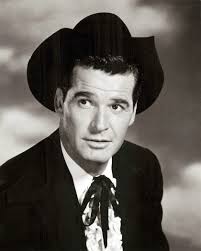
The good gunfighter was "Johnny Ringo" played by Don Durant.

The cattle drover was "Rowdy Yates" played by some actor name Clint Eastwood.

The lawman was either Hugh O'Brien as "Wyatt Earp", or Gene Barry as "Bat Masterson".


So naturally we bought into the look of the gunfighter's in "The Magnificent Seven". However, here are a couple of photographs that emphasize the inaccuracy of that movie.
This is a photo of a group of real 1880's cowboys. Not quiet the look of "The Magnificent Seven".

And how about 1880's Texas Rangers?

Paul Newman fairs better in 1964's "The Outrage" as a Mexican Bandit. Here's Newman and an actual bandito of the period. We need not talk about Lawrence Harvey, or Claire Bloom as their costumes fit the post Civil War period of the film, if not entirely accurate.
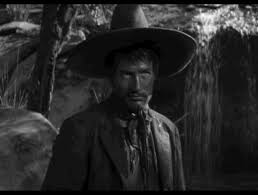

I left out Sergio Leone's "A Fistful of Dollars" until now as from a strictly cultural point of view we have an a movie about the American West being made by a group from Italy, West Germany and Spain.
Lets start with Clint Eastwood's non-iconic costume.
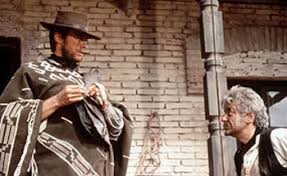
Eastwood was responsible for most of the look. As the "Man with No Name" he wore black, or brown jeans he had purchased at a sports store on Hollywood Boulevard. His hat came from a store in Santa Monica and those small cigars from Beverly Hills. By the way Eastwood is a non-smoker, but he thought the taste of the cigar in his mouth might help him with the character. This leaves the poncho which was purchased in Spain. This information is on the anniversary DVD for "The Good, the Bad and the Ugly". His look might not have been authentic, but was even copied by other actors in some of the Spaghetti Westerns that followed.

The story is pretty much Akira Kurosawa's 1950 motion picture. Playing the Mexican Bandit Juan Carrasco with stereotypical accident in unusual casting was Paul Newman. Once more the choice is not only based upon Newman's acting and star power, but that fact that Hollywood would not cast a Hispanic actor in a major part let alone the lead.
Playing the part of the Samurai now Southern Colonel Wakefield is Lawrence Harvey.
Playing the wife is actress Claire Bloom.
Portraying a Con Man instead of the Commoner is Edward G. Robinson. Fitting the American West is a Preacher instead of the Priest played by William Shatner and the story's Woodcutter has become a down on his luck Prospector played by Howard Da Silva.
As you can see the pieces are all in place in "The Outrage" for an Americanization of "Rashomon" even more so than "The Magnificent Seven", As this movie is almost a scene by scene reshoot of Akira Kurosawa's motion picture by Martin Ritt, but just moved in time, location and character names. The advantage for Ritt over Sturges is that he doesn't have to worry about backgrounds for his characters, or motivations as the four narratives provide all the audience requires as the story adapts itself to any culture very well as unfortunately in every culture we have rape and murder.
1961'S "YOJIMBO" BECOMES AN AMERICAN WESTERN MADE IN ITALY
Both "The Seven Samurai" and "Rashomon" were turned into Westerns by American's who knew the period very well and the culture of the country, but what about changing the location of another of Akira Kurosawa's motion pictures from Japan into the American Old West by a director whose culture is as Foreign to America as to Japan?
The movie was Akira Kurosawa's 1961 "Yojimbo" starring once again Toshiro Mifune and his co-star from "Spider Web Castle (Throne of Blood)" and "The Lower Depths" Isuzu Yamada.
The period of this film is interesting as it is at the end of the Tokugawa shogunate in the year 1860 and the year before the American Civil War begins to put it in perspective.
However, before we even talk about the transition we must look at the source for this movie and the surprise is according to Akira Kurosawa American author Dashiell Hammet the creator of Sam Spade and Nick and Nora Charles of the "Thin Man" series. According to the director it was the 1942 motion picture "The Glass Key" that he used as his scenario's basis, but some believe Kurosawa meant the 1929 novel "Red Harvest". So lets take a look
The novel "The Glass Key" was published in 1931. The 1935 motion picture starred George Raft as Ed Beaumont whose first name was Ned in the novel and Edward Arnold as Crime Boss Paul Madvig. The 1942 remake referenced by Akira Kurosawa starred Alan Ladd as Ed Beaumont Madvig's right hand man and Brian Donlevy as Madvig. Donlevy's Paul Madvig was more a political boss than Arnold's.
In the 1942 picture Brian Donlevy's Madvig has fallen in love with Gubernatorial candidate Ralph Henry's daughter Janet played by Veronica Lake, Henry wants Madvig's help with his campaign, In the novel he is Senator Ralph Henry. Ed Beaumont figures out that Janet Henry is just playing Paul to help her father.
Also involved is a rival gangster named Nick Varna who Madvig had been protecting from the police. Paul tells Varna he will no longer help him as he is planning to help Henry clean up the state and become Governor.
Meanwhile Henry's son Taylor played by Richard Denning is always getting himself in trouble and especially with gambling debts, Taylor is found dead and Madvig is now the prime suspect. At first it appears Nick Varna is setting up Paul Madvig for the murder. However, Beaumont believes Janet knows who really killed her brother and convinces the District Attorney to arrest her for the murder. As Beaumont expected her father confesses he was struggling with Taylor causing him to fall and hit his head resulting in Taylor's death. The film ends with Ed and Janet talking about their future and Paul and Ed still friends. Although Paul takes back the expensive engagement ring he gave Janet.
There are some differences between the screenplay to the 1942 picture and the original novel besides the Ned to Ed change. In the novel it is clear that Paul Madvig is a dangerous gang boss just like Shad O'Rory his rival. Who in the 1942 film was renamed Nick Varna. Although he remained Shad O'Rory in the 1935 George Raft feature. As I said in the 1942 movie Paul Madvig is now more a political crime boss than a straight gangster like his character in either the 1931 novel, or 1935 picture. Also in the novel Ralph Henry is a corrupt Senator and not just a candidate for Governor. A major difference also finds Janet and Ned Beaumont pairing up to solve the murder of her brother Taylor and clearing Paul. The two discover that Senator Henry outright murdered his son and at the end Ned and Paul go there separate ways and are no longer friends.
So what about the novel "Red Harvest"?
An Operator (Ops) for the San Francisco Branch of the Continental Detective Agency arrives in the town of Personville called by the locals "Poisonville", He was to meet with newspaper publisher Donald Willsson about gang activity, but Willsson was murdered prior to the "Ops" arrival.
Donald's father Elihu Willsson the local Industrialist has had control of Personville for a very long time. However, he had a labor problem and called in several gangs to help him enforce his will on the labor leaders and other townspeople. Also setting up his own Police Force. Now he is faced with those gangs not only wanting to take over the town, but are infighting with each other.
Investigating the "Ops" starts to spend time with Dinah Brand a possible love interest of Donald Willsson and the companion for gang leader Max "Whisper" Thaler. Using information from Brand and the crooked Police Chief Noolan the "Ops" spread incriminating evidence to the local gangs about a bank robbery. A gang war starts between them. While spending the night with Dinah Brand the "Ops" wakes up the next morning to find her stabbed to death with an ice pick he had handled.
Now the prime suspect the "Ops" convinces Reno Starkey a lieutenant in one of the last gangs to take on the other remaining one. When the "Ops" finds Starkey after the last gang battle. Starkey is dying and reveals he was the one who killed Dinah Brand.
As the smoke clears after all of this the crooked Police Chief and the gang leaders are all dead. The "Ops" having information on all the activities in Personville blackmails Elihu Willsson. The Industrialist is forced to call the Governor and ask for the National Guard to clean up whats left of the gangs. As a result to his advance Elihu is now back in total control of Personville, The "Ops" is cleared of Dinah Branch's murder and he leaves.
What we have are two different stories and if you are ahead of me you might know which seems more like "Yojimbo" than the other. So lets take a look at Ryuzo Kikushima and Akira Kurosawa screenplay.
A ronin played by Toshiro Mifune is wandering from town to town and comes into one that he discovers is claimed by two rival gangsters Seibei the weaker and Ushitora the stronger. What town's people there are have found themselves in the middle of a gang war.
The stranger comes to the one inn in the town, but the innkeeper advises him of the situation and suggests he leave before he is killed. The Mifune thinks the situation over and advises the innkeeper that he believes the town would be better off, if both sides were dead. So he will stay in his inn which is in the exact center between the two gangs.
I need not go any further for those who are familiar with Italian director Sergio Leone's "Per un pugno di dollari (A Fistful of Dollars)".
Toshiro Mifune is the original "Man with no Name", because of the way he introduces himself, The samurai looks out the inn's window and sees a Mulberry Field which in Japanese is "Kuwabatake". His answer is "Kuwabatake Sanjuro", but note the last part of his name "Sanjuro". It is in Japanese a proper name, but it also means "30 years old" depending on how it is written in the language .三十郎, or 三十老 with two different last kanji. The strangers adds "though I'm not forty" which means his name is "Mulberry Field 30 years old".
It should be also noted that "The Man with No Name" has a name in each of the three films of Sergio Leone's trilogy. In "A Fistful of Dollars" he is called "Joe". In "For A Few Dollars More" he is called "Manco" which is Spanish for "one armed" as he does everything, but shoot with only his left arm and hand. In "The Good, the Bad and the Ugly" he is called "Blondie". So although these names are never the same they go back to the way the ronin names himself in "Yojimbo".
At this point in either of the two motion pictures it would appear Akira Kurosawa is using the Dashiell Hammet novel "Red Harvest" as his source material. The point argued by Kurosawa scholar David Dresser and the late film critic Manny Ferber and not either the 1942 motion picture "The Glass Key" as Kurosawa has stated was "Yojimbo's" inspiration. I would add that in "Red Harvest" and a group of other related novels the "hero", or more closely the "anti-hero" is only referred too as "Ops". This is not obviously his real name, but as in both Kurosawa and Leone something for the reader/audience to identify him with.
The question raised is why would Akira Kurosawa insist that he was using the 1942 motion picture over the 1929 novel? We are experiencing deja vu as with Kurosawa claiming he never read William Shakespeare's play "King Lear" when writing the script for "Ran". Is he playing games with us? We will never know.
Actually it should be also noted that "A Fistful of Dollars" was an unauthorized remake of "Yojimbo", but as with Kurosawa Sergio Leone denied he was doing that.
As for casting the lead actor in "Yojimbo" as I mentioned above Toho Studio's was run like a traveling stage company and Toshiro Mifune was "assigned" the role as part of his contract with the studio. Whereas as most people know Clint Eastwood wasn't the first choice for the lead in the Italian/Spanish/West German production. Originally Leone wanted Henry Fonda to play the role, but was told the production company could not afford him. So he was never asked, but would appear against character in Sergio Leone's classic "Once Upon the Time in the West".
The first actor actually sought for the part was Charles Bronson who argued the script was terrible. Bronson was followed by a list of names Henry SIlva, Rory Calhoun, Tony Russel an American doing sword and sandal Italian films, Steve Reeves, Ty Hardin, James Corburn and finally Richard Harrison a popular American actor in Italy and France. Harrison suggested Clint Eastwood, but the part was first offered to Eastwood's "Rawhide' co-star Eric Fleming who turned it down to do a motion picture "High Jungle" in Peru. He was killed when a canoe in a scene Fleming was filming overturned and the strong river current swept him away. So finally the Italian director asked Eastwood. According to the French website "Nanarland,com" in an interview with the actor about Richard Harrison Clint Eastwood stated:
In Rawhide, I did get awfully tired of playing the conventional white hat...the hero who kisses old ladies and dogs and was kind to everybody. I decided it was time to be an anti-hero.In both films we have that great scene were the anti-hero kills three of the stronger gang leaders men to impress the weaker and get hired in one as a swordsmen and the other as a gunfighter.
In "Yojimbo" there is a sequence which will be done differently in "A Fistful of Dollars", but serves the same purpose. In Kurosawa's film a Government Official is called away from the town. Sanjuro learns that the stronger of the two gang leaders hired two men to kill him some 24 miles away from the town. To stir things up Sanjuro captures the two killers and sells them to the weaker leader explaining what has occurred. He then goes to the stronger and tells him that the weaker has captured the two men.
In "A Fistful of Dollars" Joe witnesses the stronger leader's gang rob an kill a detachment of Mexican soldiers guarding a shipment of gold. He takes two of the dead bodies of the gang members he finds at the scene to a cemetery. He then places the bodies against two grave markers as if they are still alive. Joe then informs each gang of the robbery and murders, but adds that two of the gang survived and were they can be found. The weaker gang leader and his men head to the cemetery to capture the two survivors to use against the stronger. While the stronger and his mean head to the cemetery to make sure the two survivors don't remain alive.
Then there is the story of the women, her husband and son which are almost identical in both motion pictures. As is the eventual capture of Sanjuro/Joe, his savage beating and being left for dead, his recuperation and revenge ending the two pictures.
Another aspect for comparison of the two features might be called their "look, or style" and "The Magnificent Seven" and "The Outrage" should be factored in here. In short how does the motion picture reflect the real culture of the country and time period shown?
All of Kurosawa's motion pictures I've mention involved Samurai and peasants from different era's However, even into the 1860's when Western clothing designs were catching on. The main clothing worn by the Japanese was a kimono with only the material and designs being heightened by a person's status. As for the Warrior, or Samurai the following comes from the website "samurai archives":
http://www.samurai-archives.com/clothing.html
Between the 12th and 17th Century, the hitatare style of dress was popular. Unlike the common kimono, hitatare was a two-piece costume, though comparably flowing and ample (Yoroi hitatarewas a snugger version for use under armor). This costume, for a possible frame of reference, is what most of the samurai wear in Japanese movies set prior to the Edo Period (the oft-mentioned Kagemusha, Ran, Throne of Blood, Heaven and Earth, ect…). Generally worn when in some 'official' capacity, the hitatare were normally adorned with the crest (or mon) of their immediate family or clan, or, in the case of relatives or direct retainers of the lord, the crest of the daimyô or shugo. Decorative bows also often adorned hitatare, normally worn on the breast.The above reference to "Heaven and Earth" is for the Japanese film from 1990 directed by Haruki Kadokawa and not Oliver Stone's motion picture of the same name from 1993 set in Vietnam.
I bring this up, because the clothing worn in all of Akira Kuroshawa's films were accurate. The same can not be said for two of the three remakes.
Take a look at this picture from "The Magnificent Seven" which takes place in the 1880's to early 1890's when civilization was taking over the "Old West".
Look's like a tough bunch of gunfighters, but the problem is this is Hollywood style. Everyone of the seven are clean shaven and except for Yul Brynner have nice haircuts. All of their clothes are pretty clean too even if somewhat wrinkled. I love Robert Vaughn's gambler style outfits that seemed to be perfectly ironed and clean whenever we see him prior to the first shoot out with Calvara and his bunch.
Can't blame John Sturges or Executive Producer Walter Mirisch for the lack of accuracy as they depend upon their subordinates and crew. I could blame Bert Henrikson who was from the "Costume and Wardrobe Department" , but the poor guy didn't even receive screen credit. The problem here is that during the mid to late 1950's on television were a series of westerns shows that set the viewers conception of what a cowboy and a gunfighter looked like. In fact Hollywood had been doing that since the silents, but with television coming into your living room daily. The image of that perfect gambler, gunfighter, cattle drover, or lawman was set in our minds.
The Gambler was "Bret Maverick" played by James Garner
The good gunfighter was "Johnny Ringo" played by Don Durant.
The cattle drover was "Rowdy Yates" played by some actor name Clint Eastwood.
The lawman was either Hugh O'Brien as "Wyatt Earp", or Gene Barry as "Bat Masterson".
So naturally we bought into the look of the gunfighter's in "The Magnificent Seven". However, here are a couple of photographs that emphasize the inaccuracy of that movie.
This is a photo of a group of real 1880's cowboys. Not quiet the look of "The Magnificent Seven".
And how about 1880's Texas Rangers?
Paul Newman fairs better in 1964's "The Outrage" as a Mexican Bandit. Here's Newman and an actual bandito of the period. We need not talk about Lawrence Harvey, or Claire Bloom as their costumes fit the post Civil War period of the film, if not entirely accurate.
I left out Sergio Leone's "A Fistful of Dollars" until now as from a strictly cultural point of view we have an a movie about the American West being made by a group from Italy, West Germany and Spain.
Lets start with Clint Eastwood's non-iconic costume.
Eastwood was responsible for most of the look. As the "Man with No Name" he wore black, or brown jeans he had purchased at a sports store on Hollywood Boulevard. His hat came from a store in Santa Monica and those small cigars from Beverly Hills. By the way Eastwood is a non-smoker, but he thought the taste of the cigar in his mouth might help him with the character. This leaves the poncho which was purchased in Spain. This information is on the anniversary DVD for "The Good, the Bad and the Ugly". His look might not have been authentic, but was even copied by other actors in some of the Spaghetti Westerns that followed.
Not all the cast were Italian, some came from Germany and that's another story.
I wrote an article about Euro Westerns which speaks about Cowboy movies made in not only Germany and Italy, but would you believe the Soviet Union? Here is a link should you be interested:
http://kinescopedreams.blogspot.com/2015/01/from-winnetou-to-sukiyaki-western.html
I want to return to the influence Kurosawa has had on others. His motion picture "Yojimbo" was part of the basis for a very interesting graphic novel series and animated character "Usagi Yojimbo". Who also appeared in some of the "Teenage Ninja Turtle" episodes when they either time travel back to feudal Japan, or appear in hero tournaments with other inter-dimensional hero's and villains.
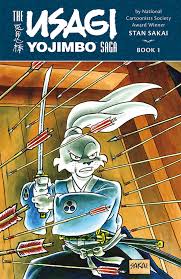


The series by Stan Sakai is set in the Edo Period and all the characters are animals. The "Usagi Yojimbo (Rabbit Body Guard)" has referenced not only Akira Kurosawa's "Yojimbo" but other of his films as well. Along with the blind swordsmen "Zatoichi" and even "Godzilla".
In a galaxy far, far away was Akira Kurosawa who influenced George Lucas is many ways, BUT "Star Wars" is not a remake of any one particular Kurosawa film as "Battle Beyond the Stars" became. Although many people think "Star Wars" was based upon 1958's "The Hidden Fortress". Below we have a poster for both motion pictures and the similarity is striking, but again this is not turning "Rashomon" into "The Outrage". In fact George Lucas lifted ideas from three of Kurasawa's motion pictures. See the attached link:
http://www.moongadget.com/origins/flash.html
George Lucas's original plan was to remake the original Larry "Buster" Crabbe's "Flash Gordon" serials. In what became the 1977 "Star Wars" Lucas used concepts associated with the three serials. 1936's "Flash Gordon", 1938's "Flash Gordon's Trip to Mars" and 1940's "Flash Gordon Conquerors the Universe" in his first draft for the film.
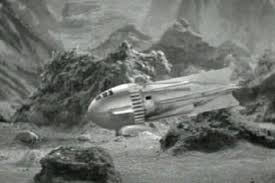
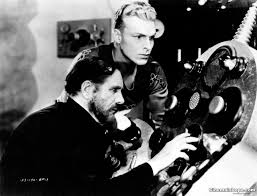
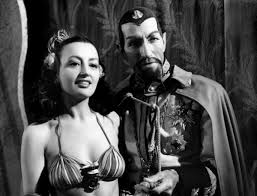

Next Lucas decided he wanted to incorporated an outer space version of three of his favorite Akira Kurosawa samurai films starring Toshiro Mifune. The three pictures were 1958's "The Hidden Fortress", 1961's "Yojimbo" and it's 1962 sequel "Sanjuro".
His second draft for the first film had C3PO and R2D2 being substituted for the two bickering peasants seen in "The Hidden Fortress". From "Sanjuro" we find the source for Queen Amidala and Padme switching places used in Episode One: "The Phantom Menace", but again "The Phantom Menace" is not a remake of "Sanjuro". While the cantina scene in the 1977 original had it's source in the cantina sequence from "Yojimbo".


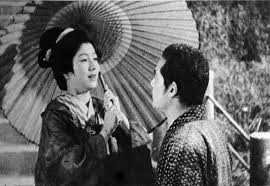
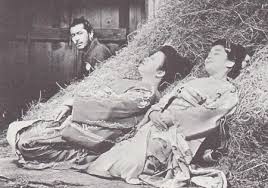
Within George Lucas' third draft for the original 1977 motion picture he incorporated a theory called monomyth from Joseph Campbell's "The Hero with a Thousand Faces". That theory is stated as:
In conclusion it is clear that like any other film maker Akira Kurosawa was influenced by other sources just as others are still being influenced by his work.
I wrote an article about Euro Westerns which speaks about Cowboy movies made in not only Germany and Italy, but would you believe the Soviet Union? Here is a link should you be interested:
http://kinescopedreams.blogspot.com/2015/01/from-winnetou-to-sukiyaki-western.html
I want to return to the influence Kurosawa has had on others. His motion picture "Yojimbo" was part of the basis for a very interesting graphic novel series and animated character "Usagi Yojimbo". Who also appeared in some of the "Teenage Ninja Turtle" episodes when they either time travel back to feudal Japan, or appear in hero tournaments with other inter-dimensional hero's and villains.

The series by Stan Sakai is set in the Edo Period and all the characters are animals. The "Usagi Yojimbo (Rabbit Body Guard)" has referenced not only Akira Kurosawa's "Yojimbo" but other of his films as well. Along with the blind swordsmen "Zatoichi" and even "Godzilla".
In a galaxy far, far away was Akira Kurosawa who influenced George Lucas is many ways, BUT "Star Wars" is not a remake of any one particular Kurosawa film as "Battle Beyond the Stars" became. Although many people think "Star Wars" was based upon 1958's "The Hidden Fortress". Below we have a poster for both motion pictures and the similarity is striking, but again this is not turning "Rashomon" into "The Outrage". In fact George Lucas lifted ideas from three of Kurasawa's motion pictures. See the attached link:
http://www.moongadget.com/origins/flash.html
George Lucas's original plan was to remake the original Larry "Buster" Crabbe's "Flash Gordon" serials. In what became the 1977 "Star Wars" Lucas used concepts associated with the three serials. 1936's "Flash Gordon", 1938's "Flash Gordon's Trip to Mars" and 1940's "Flash Gordon Conquerors the Universe" in his first draft for the film.
Next Lucas decided he wanted to incorporated an outer space version of three of his favorite Akira Kurosawa samurai films starring Toshiro Mifune. The three pictures were 1958's "The Hidden Fortress", 1961's "Yojimbo" and it's 1962 sequel "Sanjuro".
His second draft for the first film had C3PO and R2D2 being substituted for the two bickering peasants seen in "The Hidden Fortress". From "Sanjuro" we find the source for Queen Amidala and Padme switching places used in Episode One: "The Phantom Menace", but again "The Phantom Menace" is not a remake of "Sanjuro". While the cantina scene in the 1977 original had it's source in the cantina sequence from "Yojimbo".
Within George Lucas' third draft for the original 1977 motion picture he incorporated a theory called monomyth from Joseph Campbell's "The Hero with a Thousand Faces". That theory is stated as:
A hero ventures forth from the world of common day into a region of supernatural wonder: fabulous forces are there encountered and a decisive victory is won: the hero comes back from this mysterious adventure with the power to bestow boons on his fellow manWhile George Lucas used three films directed by Akira Kurosawa in his "Star Wars" mythology. It is clear that he never remade any one of them into anyone of that series. In the current "Star Wars: The Force Awakens" we have a reworking of that first cantina sequence based upon "Yojimbo".
In conclusion it is clear that like any other film maker Akira Kurosawa was influenced by other sources just as others are still being influenced by his work.

















No comments:
Post a Comment